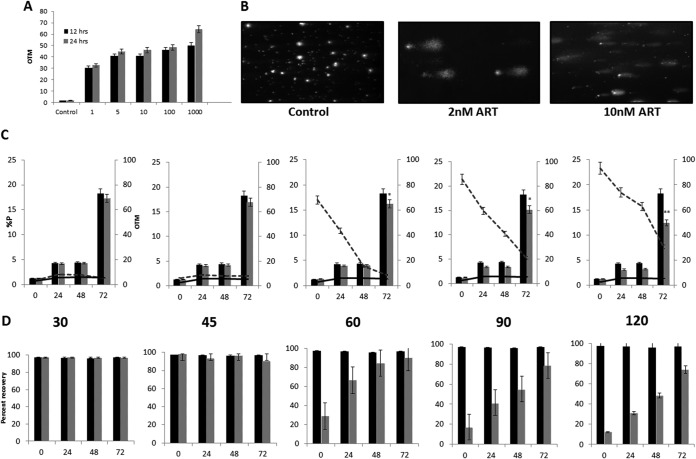FIG 1.
Artesunate (ART) causes DNA damage in P. falciparum. (A) Comet assay measurement of the olive tail moment (OTM) at 12 h and 24 h after ART treatment (1, 5, 100, and 1,000 IC50s) compared to untreated (Control) parasites. The error bars represent standard errors of the means. (B) Comet assay visualization of DNA damage in P. falciparum parasites upon treatment with 2 nM (1 IC50) and 10 nM (5 IC50s) ART compared to untreated parasites. (C) Parasite growth and OTM values determined by a comet assay during the recovery period compared to those of untreated control parasites maintained in parallel. Parasites were treated with 2 nM ART for 30, 45, 60, 90, and 120 min (left to right), after which they were washed to remove ART, returned to culture, and sampled at 24, 48, and 72 h for determination of percent parasitemia (%P) (black bars, untreated cultures; gray bars, ART-treated cultures) and DNA damage, measured as the OTM, in comet assays (solid line, untreated cultures; dashed line, ART-treated cultures) (*, P < 0.015; **, P < 0.005). (D) Percent recovery of damaged parasite nuclei was analyzed by a comet assay at 24, 48, and 72 h during the reculture phase of parasites after ART treatment. Images from comet assays (minimum n = 10) were randomly scored as damaged (detectable comet) and undamaged (no detectable comet) nuclei for each sample. Shown are results indicating DNA repair as percent recovery of nuclei in control (black bars) and ART-treated (gray bars) cultures. The error bars represent standard errors of the means.

